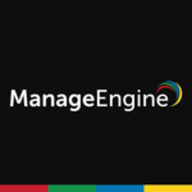


Microsoft Configuration Manager and ManageEngine Network Configuration Management compete in network and device management. Microsoft Configuration Manager has the upper hand due to its integration with Windows environments and comprehensive licensing options, while ManageEngine remains a strong contender with its focus on network configuration and compliance.
Features: Microsoft Configuration Manager offers extensive software deployment, patch management, and remote desktop functionality. ManageEngine Network Configuration Management provides multi-vendor compatibility, automatic configuration backup, and real-time configuration updates.
Ease of Deployment and Customer Service: ManageEngine Network Configuration Management offers straightforward deployment with both cloud and on-premises options, supported by detailed documentation and responsive support. Microsoft Configuration Manager has a more complex deployment process suitable for experienced IT teams, benefiting from Microsoft's extensive customer service resources.
Pricing and ROI: Microsoft Configuration Manager typically incurs higher setup costs, delivering excellent ROI for enterprises invested in Microsoft ecosystems. ManageEngine Network Configuration Management presents an affordable pricing model with significant ROI for businesses focused on network management.


Microsoft Intune provides centralized management of mobile devices and applications, ensuring security, compliance, and productivity through integration with Microsoft services like Microsoft 365 and Azure Active Directory.
Organizations use Intune for managing mobile devices and applications, enhancing security and compliance across platforms. With features like single sign-on, conditional access, and zero-touch deployment via Autopilot, it facilitates efficient operations. Intune's scalability, easy enrollment, and capabilities such as remote wipe support diverse device management, offering robust data protection and efficient operation. Despite its features, improvement areas include reporting, compatibility with non-Microsoft devices, and better support for macOS and Linux devices.
What are the key features of Microsoft Intune?
What benefits should users look for in reviews?
In industries such as finance, healthcare, and education, Microsoft Intune is implemented to ensure secure and compliant device management. Companies leverage its capabilities to deploy security policies and manage both corporate-owned and BYOD environments, facilitating a unified approach to data protection and compliance.
Network configurations are in a constant flux and any wrong or unauthorized configuration change on live equipment can have profound effects on network security, reliability and the service provided.
Take control of your network configurations and simplify change management.
OpManager's Network Configuration Management helps you automate policy–based change, configuration and compliance on your network devices, making manual configuration errors a thing of the past.
Microsoft Configuration Manager helps IT manage PCs and servers, keeping software up-to-date, setting configuration and security policies, and monitoring system status while giving employees access to corporate applications on the devices that they choose. When Configuration Manager is integrated with Microsoft Intune, you can manage corporate-connected PCs and Macs along with cloud-based mobile devices running Windows, iOS, and Android, all from a single management console.
New features of Configuration Manager, such as the support of Windows 10 in-place upgrade, co-management with Microsoft Intune, Windows 10 and Microsoft 365 Apps for enterprise Servicing Dashboard, integration with Windows Update for Business, and more make deploying and managing Windows easier than ever before.
We monitor all Configuration Management reviews to prevent fraudulent reviews and keep review quality high. We do not post reviews by company employees or direct competitors. We validate each review for authenticity via cross-reference with LinkedIn, and personal follow-up with the reviewer when necessary.